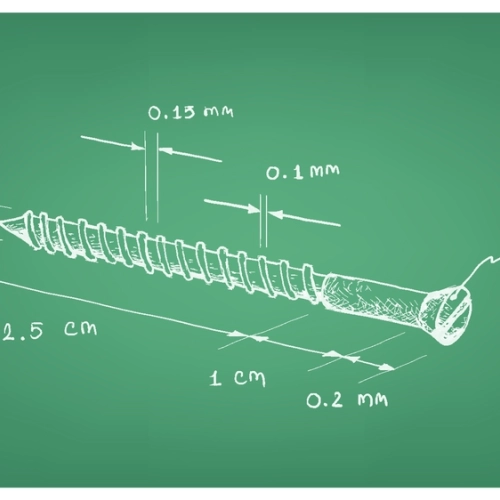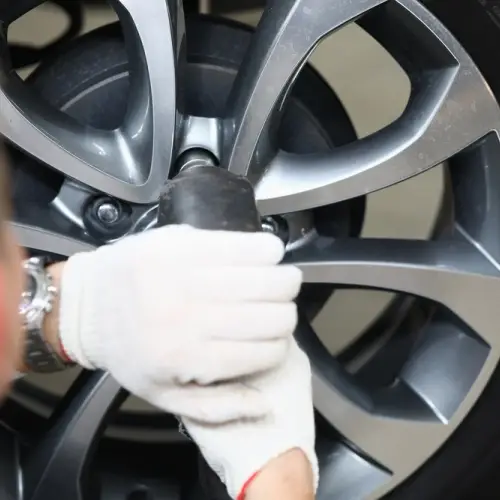
When we think of simple machines, objects such as pulleys, levers, or inclined planes may come to mind.
However, there is another simple machine that often goes unnoticed, but has a great presence in our daily lives: the screw.
The screw is one of the most versatile and widely used simple machines in the modern world. From the electronic devices we use to the vehicles we drive, the screw is found everywhere.
What is a screw?
In its most basic form, a screw is a cylindrical rod with a continuous helical groove, known as a thread, on its outer surface.
The screw thread is wound around its axis, forming a constant angle, and can be of different types, such as metric thread or Whitworth thread.
How does a screw work?
 This simple setup is considered a simple machine because of the way the screw is used.
This simple setup is considered a simple machine because of the way the screw is used.
When we turn the screw on its axis, we take advantage of its helical thread to convert the rotational motion into a linear motion. This is because the distance between the turns of the thread is constant, allowing this small device to move forward or backward as it turns.
The key to understanding how the screw works as a simple machine is in its pitch and its diameter. The pitch refers to the axial distance between two consecutive points on the thread. On the other hand, the diameter is the distance between two opposite crests on the thread.
The ratio of pitch to diameter determines the mechanical advantage of the screw. Mechanical advantage is defined as the ratio of the applied force to the resultant force generated on the load being moved. If the pitch is large compared to the diameter, the screw will have a greater mechanical advantage, meaning that less force will be required to move a given load.
Conversely, if the pitch is small compared to the diameter, a greater force will be required to achieve the same displacement.
What is the purpose of the screw as a simple machine?
 One of the most common applications of this simple machine is in clamping devices, such as vices or those used to assemble furniture.
One of the most common applications of this simple machine is in clamping devices, such as vices or those used to assemble furniture.
When turned, a clamping force is generated that holds the parts together. The mechanical advantage offered by these elements allows us to apply a relatively small force when turning it, but achieve a much greater clamping force on the load.
Another important application is seen in motion transmission systems, such as worm screws and nuts.
These mechanisms allow rotary motion to be converted into linear motion, and are used in devices such as hydraulic jacks or lead screws in machine tools. Here, the screw acts as a force multiplication mechanism, allowing us to lift heavy loads with a relatively small input force.
Examples of screws as a simple machine
 Here are some examples of how screws are used:
Here are some examples of how screws are used:
- Construction : These elements are used to join beams, drywall, door and window frames, and many other structural elements in building construction. They provide a secure and durable joint.
- Furniture : These types of simple machines are essential for assembling furniture. They are used to attach legs, hinges, handles, and other components. They provide stability and strength to the furniture.
- Electronics : In the manufacture of electronic devices, they are used to hold components in place, such as printed circuit boards, connectors, and brackets. They are also used in the repair and maintenance of electronic equipment.
- Automotive : Screws are used in the automotive industry to assemble engines, chassis, bodies and other components. They provide a secure connection that is resistant to the vibrations and forces found in a moving vehicle.
- Aerospace industry : They are used to assemble airplanes, rockets and satellites. In many cases, they are required to be of high strength and quality to withstand the extreme conditions to which these structures are subjected.
- Sports and leisure equipment : Screws are used in the manufacture of sports equipment such as bicycles, skates, rackets and surfboards. They provide a secure and strong connection to ensure safety and performance during sports.
- Food Industry : In the food industry, these small devices are used in processing and packaging machinery. They help to assemble and maintain the machines used in food production.
- Nuclear Power Plants : In the nuclear industry, bolts are used in virtually all areas of nuclear power plants: to secure the structure, the operation of reactors, the assembly of nuclear fuel handling equipment, in the construction of containment enclosures, in cooling systems or safety systems. Since nuclear environments are highly demanding, these bolts must meet strict standards of quality and resistance to radiation, corrosion and extreme temperatures.
History: invention and evolution
The history of the screw as a simple machine dates back to ancient Greece.
It was conceived in the 3rd century BC by the Greek mathematician and inventor Archimedes, who created the Archimedes screw for raising water, a design that is still used today in certain applications. This mechanism consisted of a cylinder with a propeller inside, which when rotated, allowed liquids to be raised to higher levels.
This invention not only helped the Greeks irrigate their lands, but also had applications in engineering and construction.
The Romans later developed the concept of the screw for fastening parts, creating the first screw as a fastener in the 1st century AD. However, it was a slow process because screws were manufactured by hand, which was expensive and limited their use. It was not until the Industrial Revolution in the 18th century that the screw gained popularity as a fundamental piece of equipment in industry.
The creation of the standard thread by English inventor Henry Maudslay and the development of machines to mass-produce them revolutionized their use.
Since then, the screw has become indispensable in virtually all areas of engineering, construction and manufacturing.
Summary and conclusions
In short, the screw is a simple, ingenious and essential machine found in a wide variety of applications. Its helical thread allows us to convert rotational motion into linear motion and take advantage of the mechanical advantage to perform tasks that would require much more force without its aid.
Whether we are building structures, fixing objects or assembling furniture, the screw is a fundamental piece that allows us to simplify and improve our work.